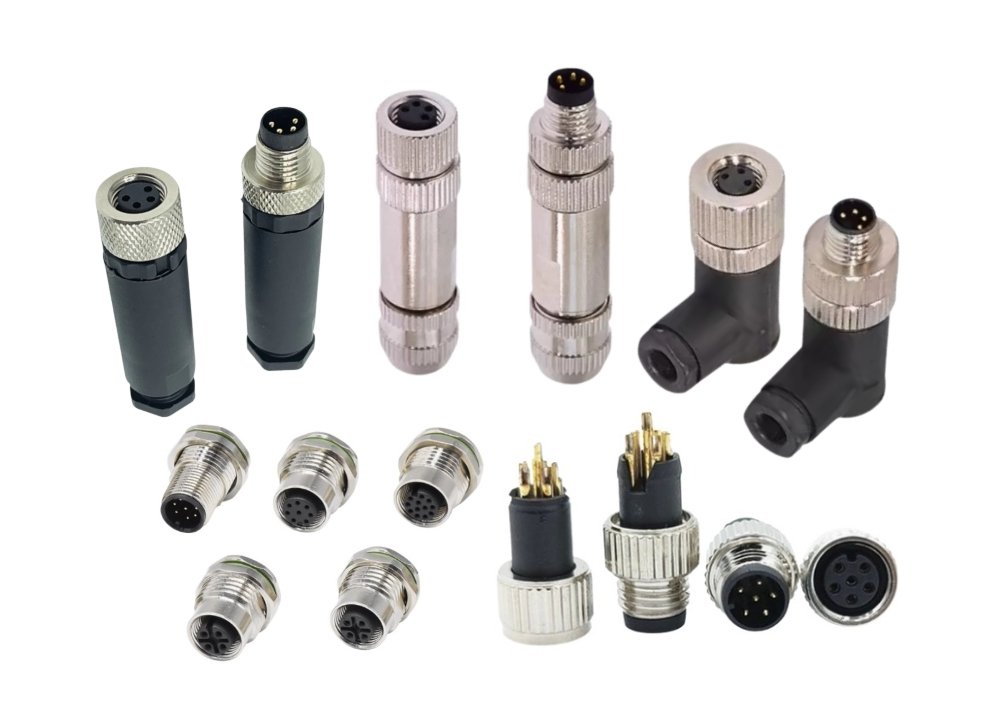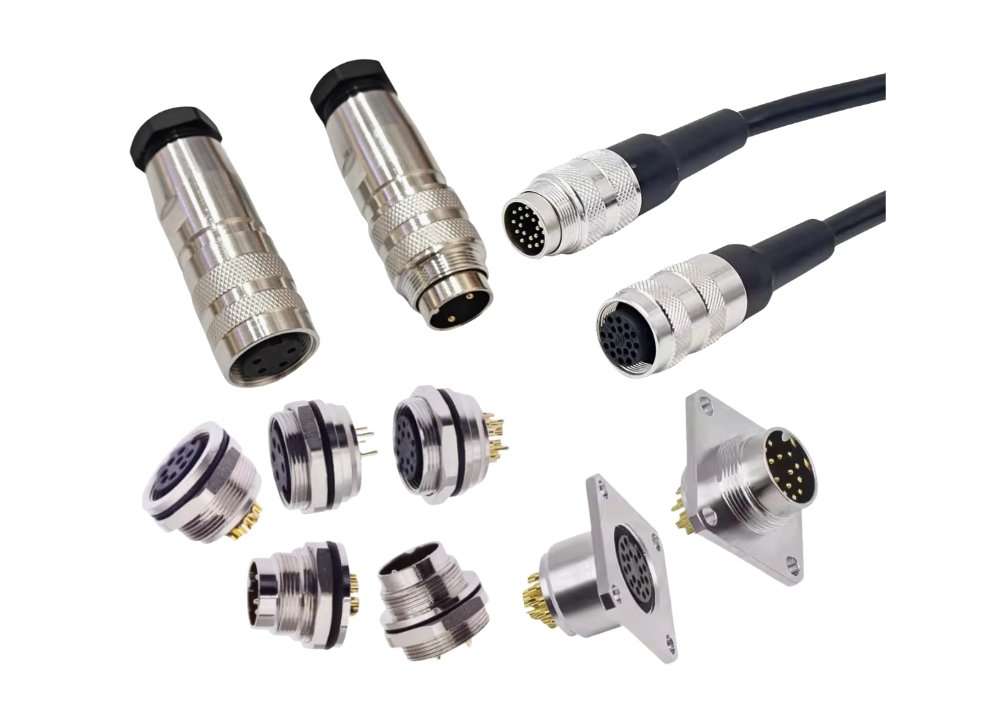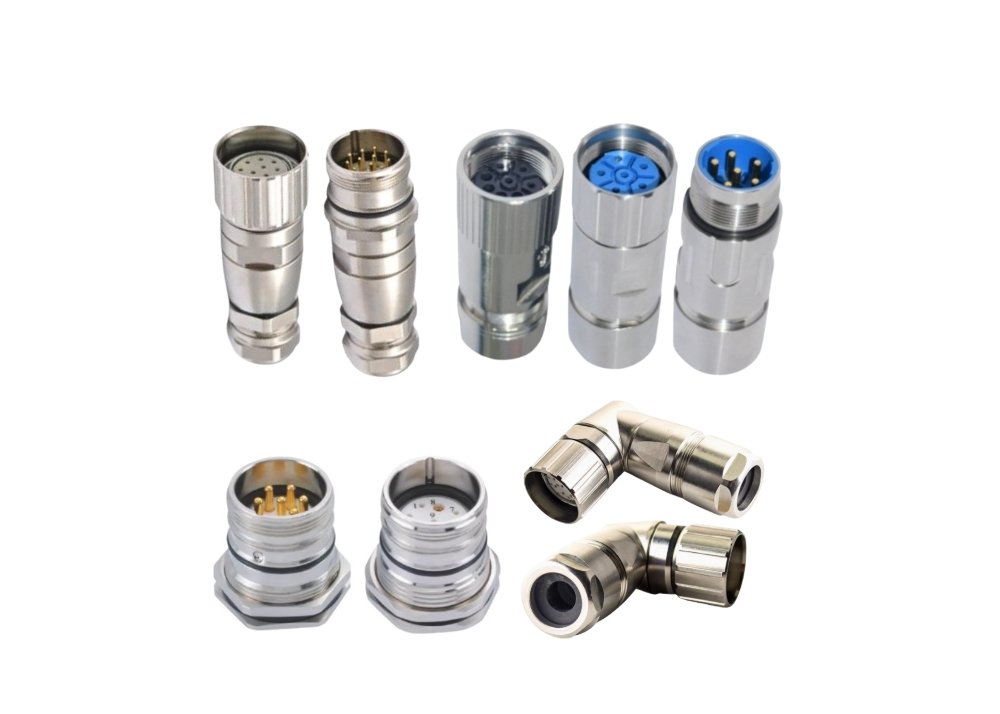Push-pull self-locking connectors are critical in aerospace, automotive, medical devices, and industrial automation. Their reliability hinges on multiple interdependent factors—from material science to environmental resilience. Below, we dissect six core questions with data-driven insights to guide optimal selection and application.
Material Degradation Under Extreme Temperatures: How do thermal cycles affect conductivity?
Thermal stress directly impacts electrical performance. Connectors exposed to temperatures beyond -55°C to +125°C risk contact deformation, increasing resistance by 15–30% and causing signal loss . For instance, brass contacts undergo plastic deformation at 150°C, reducing contact pressure. Solutions include:
- Material upgrades: Beryllium copper or phosphor bronze contacts maintain elasticity up to 200°C, limiting resistance drift to <5% .
- Thermal management: Aluminum housings with integrated heat sinks (thermal conductivity: 200 W/m·K) dissipate heat 40% faster than stainless steel, preventing thermal runaway .
- Testing protocols: Accelerated life tests (1,000 cycles between -55°C and +125°C) verify stability, ensuring MTBF >100,000 hours .
Environmental Sealing for Harsh Conditions: What IP ratings ensure reliability?
Moisture and particulate ingress cause 40% of field failures. Connectors in marine or industrial settings require:
- IP67/IP68 sealing: Silicone O-rings (compression set <20%) combined with injection-molded seals block water ingress at depths up to 2m for 24hrs .
- Corrosion resistance: 316 stainless steel housings survive 500-hour salt spray tests (per ASTM B117), outperforming aluminum by 3× in longevity .
- Chemical resilience: PVDF polymer housings resist oils, acids, and UV degradation, maintaining structural integrity after 10,000 hours of UV exposure .
Electrical Performance Optimization: How to balance current density and signal integrity?
High-current applications demand precision engineering:
- Contact design: Gold plating (0.5–3µm) reduces contact resistance to <3mΩ, critical for 5G/EV applications with data rates >10Gbps .
- Voltage/current matching: Undersized connectors (e.g., 5A rated for 10A loads) overheat, risking insulation failure. Current-carrying capacity must align with load profiles—e.g., 32-pin connectors handle 250V/7A per pin .
- EMI shielding: 360° metal braids (shielding effectiveness >90dB at 1GHz) prevent crosstalk in dense PCB layouts .
Mechanical Durability in Dynamic Environments: Can vibration resistance be quantified?
Vibration-induced disconnection is mitigated through:
- Locking mechanisms: Dual-stage locks (e.g., primary latch + secondary slide) withstand vibrations up to 2000Hz/15g, with zero disconnects in MIL-STD-810G tests .
- Housing materials: PPS thermoplastic (tensile strength: 180 MPa) endures 5,000+ mating cycles without wear .
- Robustness validation: Random vibration tests (36.6g RMS) confirm <1µs signal interruption .
Miniaturization vs. Performance Trade-offs: How small can connectors go without compromising function?
Downsizing challenges include heat dissipation and pin density:
- High-density layouts: 0.8mm pitch designs support 32 pins in M18 housings, enabling 10Gbps/mm² signal density .
- Thermal compromises: Micro-connectors (<5mm) require nanocrystalline coatings to dissipate heat, avoiding derating above 3A .
- Hybrid solutions: Combining mixed-signal transmission (power + data pins) reduces footprint by 50% .
Compliance and Sustainability Constraints: Do RoHS rules limit material choices?
Regulations drive innovation:
- Hazardous substance bans: REACH/RoHS-compliant alternatives like bio-based PA410 plastics reduce carbon footprint by 30% vs. traditional PBT .
- Green manufacturing: Cyanide-free gold plating and halogen-free flame retardants meet IEC 61249-2 standards .
- Recyclability: Modular designs enable 85% component recovery, aligning with EU Circular Economy mandates .
Partner with Zhongxiang Electronic Technology
At Zhongxiang Electronic Technology Co., Ltd., we engineer high-reliability connectors that excel in extreme conditions. As a source factory, we offer:
- Customization: Tailored solutions for pin counts (2–32), materials (e.g., 316 stainless steel), and IP ratings (up to IP69K).
- Testing rigor: 100% HALT/ALT validation per MIL-STD-810G.
- Fast delivery: 72-hour prototyping and ISO 9001-certified production.
Explore our portfolio athttp://en.zxconnector.com/
References
- IoT Analytics Group, “Connector Failure Statistics in Industrial IoT,” 2024.
- IEEE 1624-2022, “Reliability Testing for Electronic Connectors.”
- ASTM B117-25, “Standard Salt Spray Test Method.”
- MIL-STD-810H, “Environmental Engineering Considerations.”
- IPC-9592B, “Performance Parameters for Power Conversion Devices.”
FAQ
1. How to prevent corrosion in marine environments?
Use 316 stainless steel housings with fluorosilicone seals (500+ hours salt spray resistance).
2. Can push-pull connectors support high-speed data?
Yes, with gold-plated contacts and 360° shielding, they achieve 10Gbps+ speeds.
3. What is the lifespan of these connectors?
5,000 mating cycles when using PPS/PEEK insulators.
4. Are there lightweight options for aerospace?
Titanium or aluminum alloys reduce weight by 40% versus steel.
5. How do RoHS rules affect performance?
Bio-based polymers and cyanide-free plating maintain durability while complying with regulations.
Summary
Impact Factors of Push-Pull Self-Locking Connectors: A Technical Analysis
Push-pull self-locking connectors enable critical connections in aerospace, automotive, and industrial systems. Their performance depends on six key factors:
Material Degradation Under Extreme Temperatures
Thermal cycling beyond -55°C to +125°C degrades contacts, increasing resistance by 15–30%. High-elasticity alloys (beryllium copper) and active cooling are essential.
Environmental Sealing for Harsh Conditions
IP67/IP68 sealing with silicone or fluorosilicone seals prevents failures in wet/dusty environments. Corrosion-resistant metals extend service life.
Electrical Performance Optimization
Gold plating ensures low contact resistance (<3mΩ). Current/voltage ratings must match application needs to prevent overheating.
Mechanical Durability in Dynamic Environments
Dual-stage locking mechanisms survive intense vibration. Rigorous testing validates reliability.
Miniaturization vs. Performance Trade-offs
High-density designs enable compact layouts but require thermal management solutions.
Compliance and Sustainability Constraints
Eco-friendly materials and processes meet regulations without sacrificing performance.
Partner with Zhongxiang Electronic Technology for custom, high-reliability solutions.
(References and FAQ sections identical to above.)




